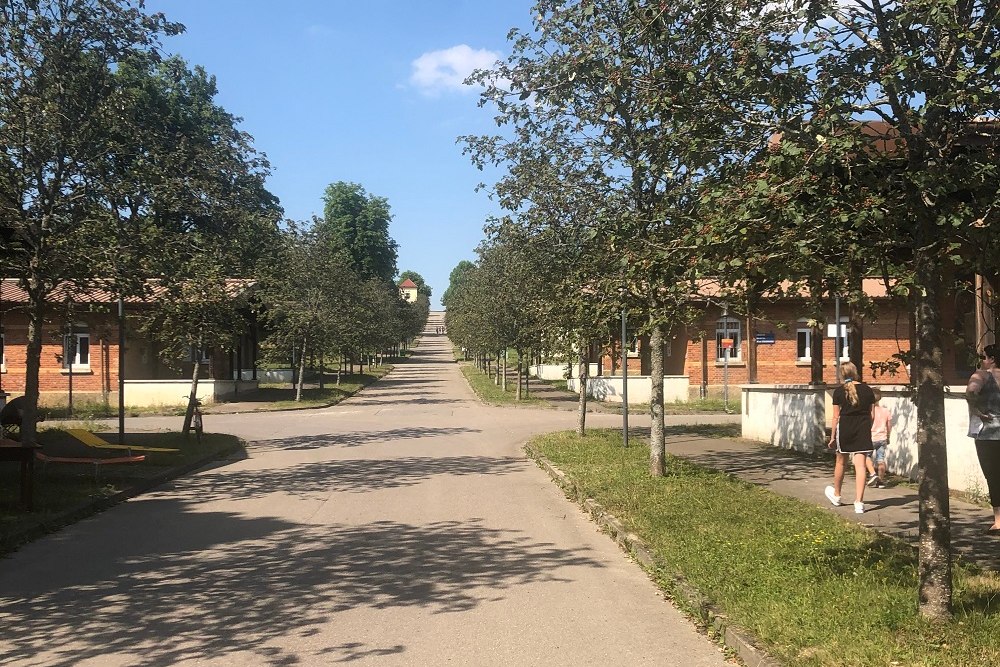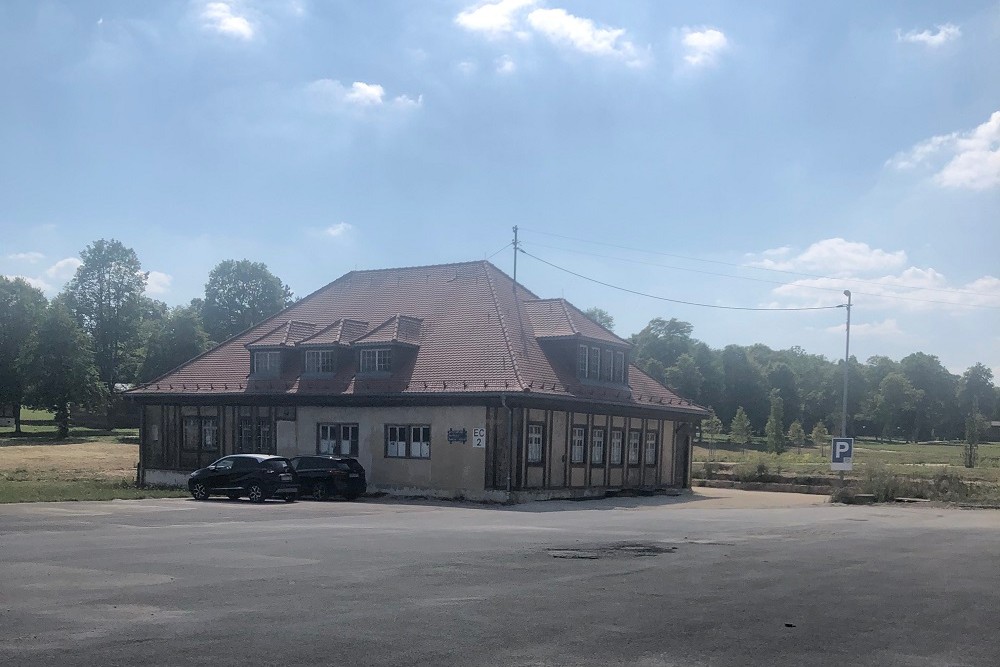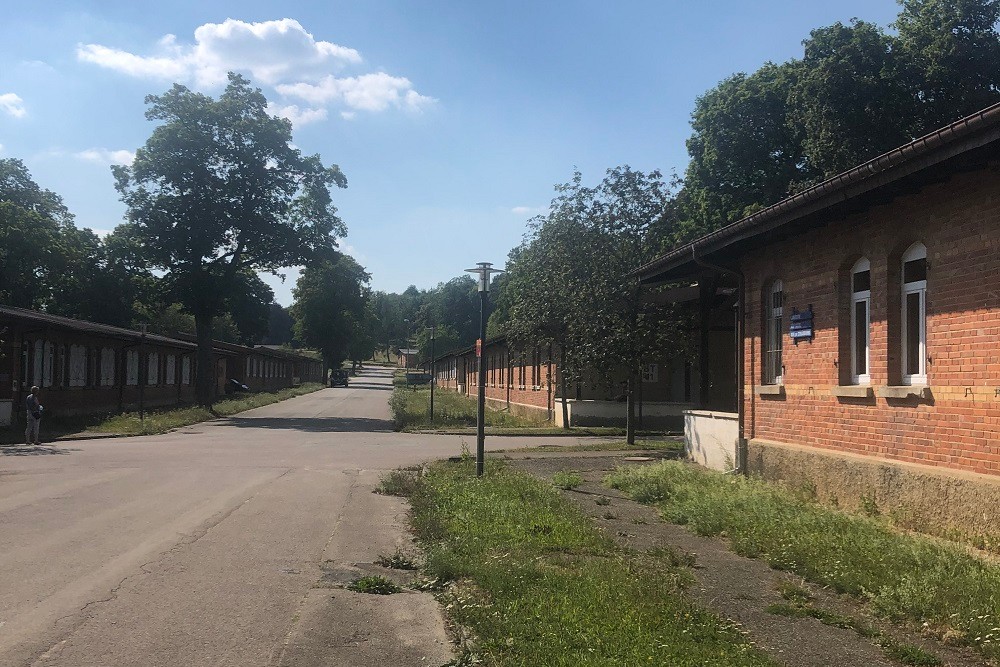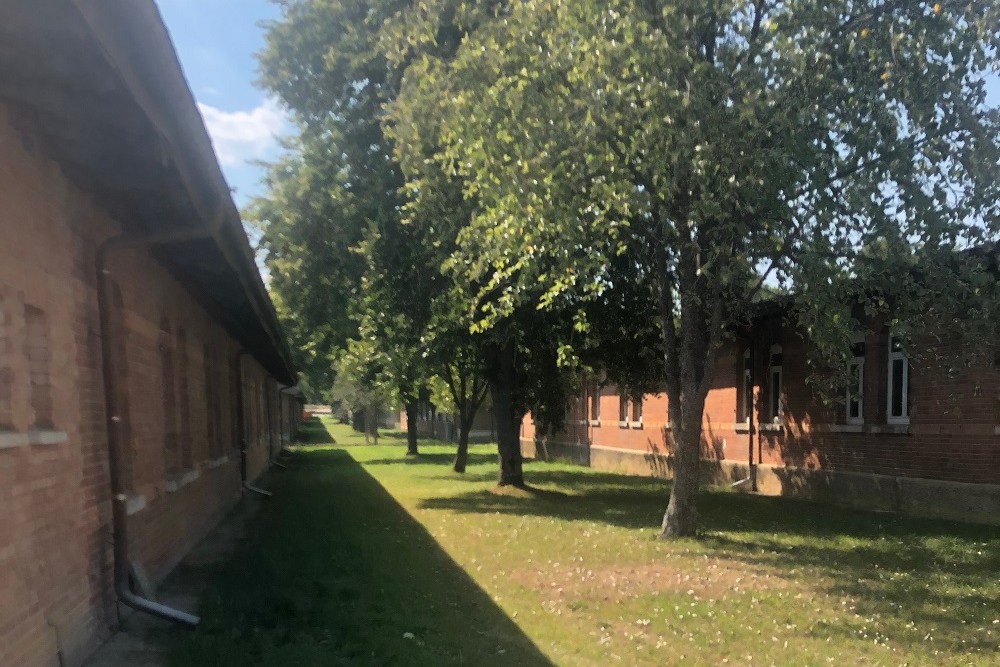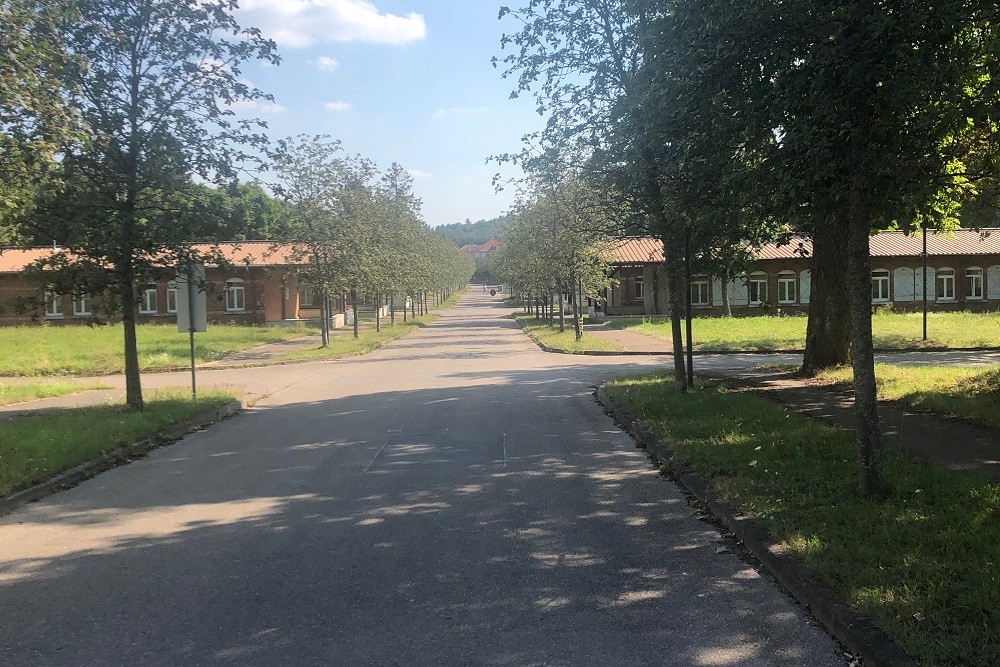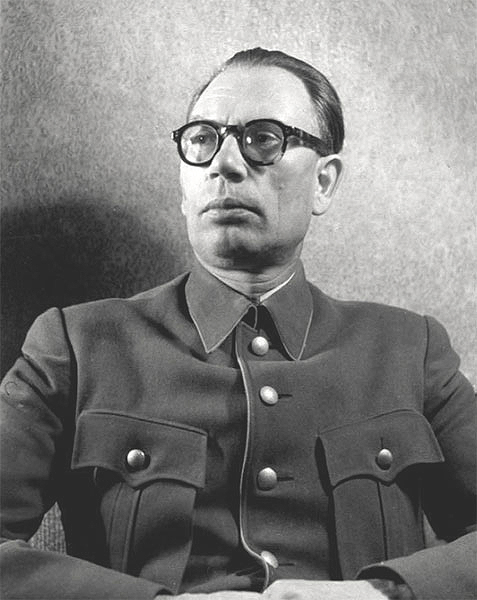Altes Lager Münsingen
Altes Lager Münsingen
August 3, 1895 would radically change life in and around Münsingen: Wilhelm II, King of Württemberg, signed the authorization for the expropriation of land on the Münsingen Hardt. This signature closes the discussion about the location of the combat shooting range for the XIII Royal Württemberg Army Corps. Münsingen was preferred to Nellingen and Böhmenkirch.
The reason for this: there are only four courtyards within the intended area: Ludwigshöhe, Bäumlesburg, Achenbuch and Heroldstetten. At the other two locations, entire villages had to give way to the planned maneuvering area. The Reichstag is paying nearly five million marks for the 3,669 hectare site in the Central Alb.
The first sharp shooting took place on October 24, 1895. The construction of the first barracks in the old camp started almost simultaneously. At first, however, the soldiers only have one tent camp.
The old warehouse, around 1900.
In 1897, the military inaugurated the first farm buildings, the general apartment and the crew quarters. After the turn of the century, in addition to numerous neighborhoods and stable barracks, two watchtowers on the shooting range were also available. In the third and final major construction phase before World War I, another 600,000 marks were spent. Among other things, for the Schlössle for the commander, a disc court, the provision office and a bullet-proof shelter for the residents of Ludwigshöhe.
The elderly experience the origins of German aviation up close. Every year from 1908 onwards, an airship division from Berlin lands with their balloons in Württemberg Square.
Then the First World War began: at the end of August 1914, the War Ministry established the 54th Reserve Infantry Division on the Hardt. The fighting during the war requires constant supplies. The training area in "Swabian Siberia" will be a transit station for new training and deployment units. At the same time, large prisoner of war camps are being built in Münsingen.
In 1916, King Willhelm II visited the soldiers in the old camp.
800 French are the first foreigners to be accommodated there. During victories on the Eastern Front, the Germans captured thousands of soldiers. The army is building more camps for Russians, Italians and Serbs.
Long after the First World War, only a few soldiers, so-called voluntary units and paramilitary combat units, made use of the training area. It was not until the late 1920s that more maneuvers took place on the site again.
After Adolf Hitler took power in 1933, he had the army reinforced. This is noticeable in the military training area Münsingen, where the Wehrmacht is practicing more and more. In the same year, the Chancellor attended the autumn exercise of the Württemberg troops in the Swabian Alb.
Two years later there are rumors that the square will be enlarged. In fact, in early 1937, the terrible news came from the Urach Oberamt about the evacuation of the village of Gruorn, the full marking of which was added to the military training area. With many submissions and numerous requests, the residents try in vain to avert these plans. On March 1, 1939, the resettlement of Gruorn with about 650 inhabitants was almost complete.
The Second World War started in 1939. Many of the prisoners from Poland and France were transported to Münsingen by the National Socialists. At the same time, new units are constantly being set up on the Alb.
In Italy, in the summer of 1943, there was a revolt against Mussolini. The Duce is arrested and later released by the Germans. Then the military plan was to set up reliable Italian units that would be trained according to German principles.
Mussolini visited his troops at the Münsingen military training ground in 1944 and the generals were the first to implement these plans in Münsingen. In September 1943 the order was issued to establish the 4th Italian mountain division "Monte Rosa" on the Central Alb. Mussolini travels personally to Münsingen to examine the new division.
One of the last German units set up by the Wehrmacht in the old camp is the 78th Infantry and Assault Division, which left the Hardt for the Eastern Front in November 1944.
Then the defected ex-general of the Red Army, Andrei Vlasov, founded the division named after him in Münsingen, which consists mainly of Russian prisoners. This "liberation army" left for the Vistula front in February 1945.
Little is known about the last days of the Second World War on the military training ground. When the Americans marched in in April 1945, the last of the German soldiers ran. The American units find an abandoned camp. The American era in the Alb only lasts a few weeks. In August 1945, the French occupier took over command.
Do you have more information about this location? Inform us!
Source
- Text: Bjorn van Marle
- Photos: Bjorn van Marle
